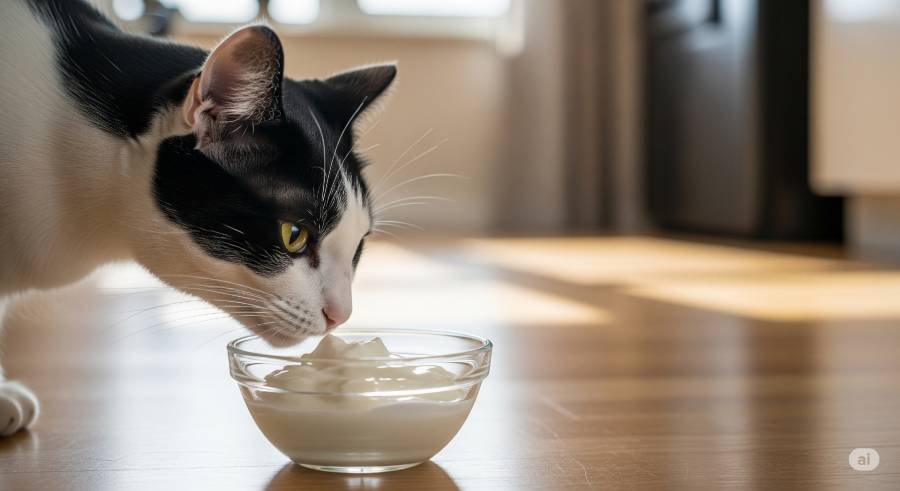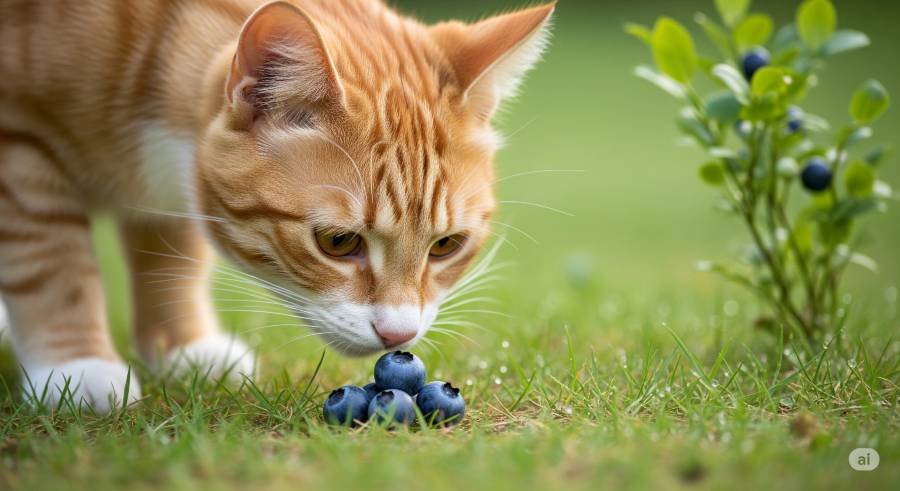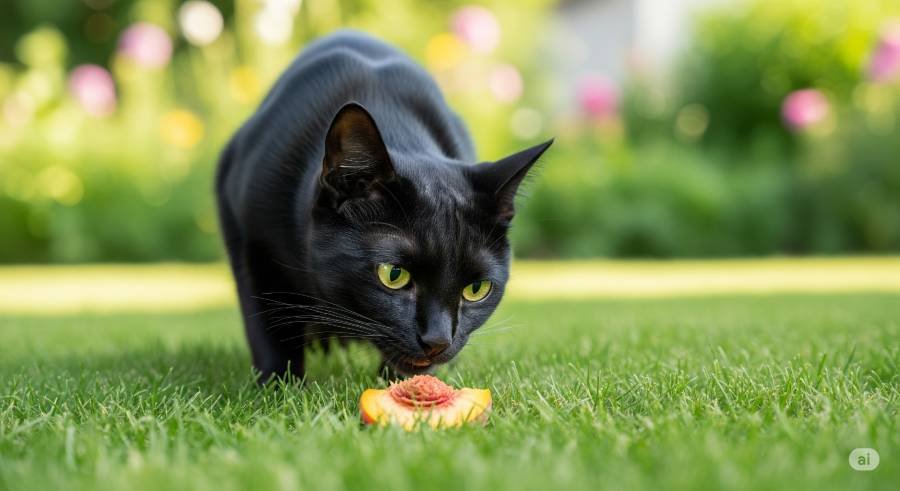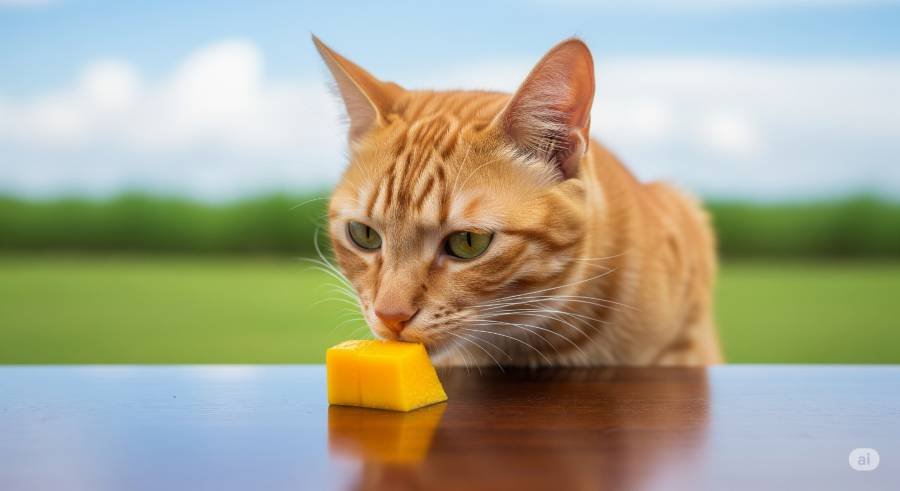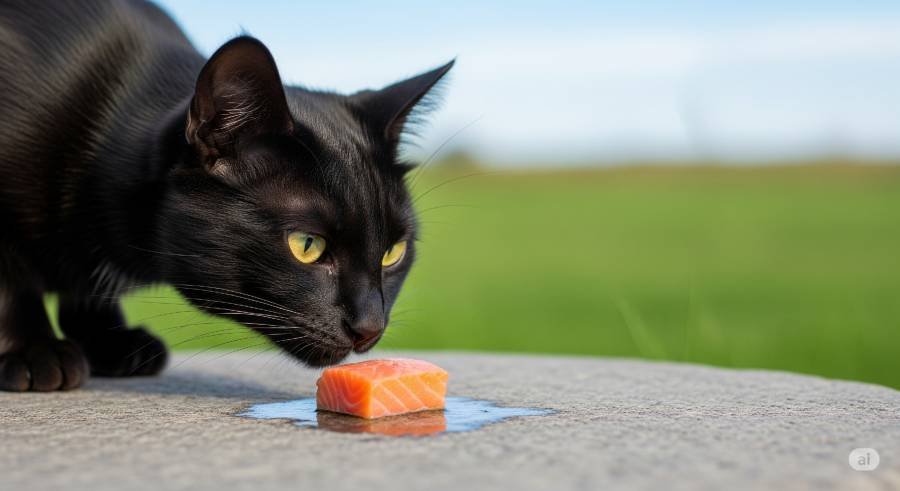Cats can eat small amounts of ripe, red tomato flesh as an occasional treat, but the green parts of the tomato plant are toxic.
As obligate carnivores, felines require a meat-based diet, and tomatoes provide limited nutritional value.
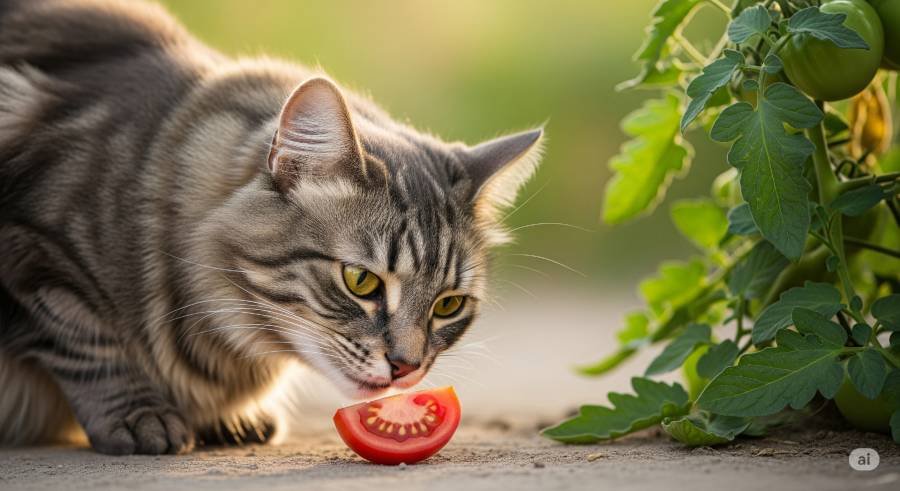
Potential Benefits of Tomatoes for Cats
When given sparingly, the ripe flesh of tomatoes may offer minor benefits:
- Vitamins: Ripe tomatoes are a source of vitamins C and K. Although felines produce their own vitamin C, small amounts are harmless, and vitamin K supports blood clotting.
- Antioxidants: Lycopene, an antioxidant in tomatoes, may help reduce oxidative stress, though felines benefit less from this than humans.
- Fiber: The fiber content in tomato flesh can promote healthy digestion and may assist with mild constipation.
- Hydration: With approximately 94% water content, tomatoes can aid hydration, particularly for felines that drink less water.
- Low Calories: Ripe tomato flesh is low in calories, making it a lighter treat option compared to high-fat human foods.
These benefits are minimal, as felines derive essential nutrients from meat-based diets. For more on safe fruits, explore our guide on what fruits can cats eat.
Risks and Dangers of Tomatoes for Cats
While ripe tomato flesh is safe in small amounts, several risks must be considered:
- Toxic Green Parts: The stems, leaves, and unripe green tomatoes contain solanine, a toxic alkaloid that can cause severe symptoms in felines, such as vomiting, diarrhea, lethargy, weakness, or, in rare cases, neurological issues or death.
- Acidity: The natural acidity of tomatoes, even when ripe, may irritate a feline’s stomach, leading to vomiting or diarrhea, especially in those with sensitive digestive systems.
- Choking Hazard: Tomato skin or large pieces of flesh can pose a choking risk or be difficult to digest, particularly for smaller felines.
- Pesticides or Contaminants: Non-organic tomatoes may have pesticide residues or bacteria, necessitating thorough washing and peeling.
- Processed Tomato Products: Tomato-based foods like sauces, ketchup, or soups often include harmful additives such as salt, sugar, garlic, or onions, which are toxic to felines. For more on toxic foods, see our articles on can cats eat garlic and can cats eat onions.
- Allergies or Sensitivities: Some felines may develop allergic reactions (e.g., itching, swelling) or gastrointestinal upset from tomatoes.
- Nutritional Imbalance: Tomatoes lack critical feline nutrients like taurine, and excessive consumption could disrupt a balanced diet.
How to Safely Feed Tomatoes to Cats
To safely offer tomatoes, follow these guidelines:
- Use Ripe Tomato Flesh Only: Select fully ripened, red tomatoes and remove all green parts, stems, leaves, and skin, as these are toxic.
- Wash Thoroughly: Rinse tomatoes under running water to eliminate pesticides, dirt, or bacteria.
- Cut into Small Pieces: Dice the flesh into tiny, bite-sized pieces or mash it to prevent choking and ease digestion.
- Feed Sparingly: Offer a small portion (e.g., a teaspoon of tomato flesh) once or twice a month. Treats should not exceed 10% of a feline’s daily caloric intake.
- Avoid Processed Tomatoes: Do not feed tomato sauces, ketchup, or cooked dishes containing additives like garlic, onions, or excessive salt. Learn more about safe human foods in our guide on what human food can cats eat.
- Monitor for Reactions: Introduce tomatoes gradually and observe for digestive upset (e.g., vomiting, diarrhea) or allergic reactions (e.g., itching, swelling) over 24–48 hours. Discontinue tomatoes and consult a veterinarian if issues arise.
- Consult a Vet: Before offering tomatoes, especially to felines with health conditions like digestive sensitivities, kidney disease, or diabetes, seek veterinary advice.
Signs of Tomato-Related Issues
If a feline consumes toxic green tomato parts or reacts poorly to tomato flesh, watch for:
- Vomiting or diarrhea
- Lethargy, weakness, or disorientation
- Tremors or seizures (indicating solanine poisoning)
- Itching, swelling, or skin changes (suggesting an allergic reaction)
- Abdominal discomfort or pain
If these signs appear, stop feeding tomatoes and contact a veterinarian immediately. Solanine poisoning or allergic reactions require urgent care.
Expert Opinions
Veterinary resources, such as the ASPCA and PetMD, state that ripe tomato flesh is non-toxic to felines but caution that green parts (stems, leaves, unripe tomatoes) are toxic due to solanine. The ASPCA advises against feeding processed tomato products due to harmful additives like garlic or onions. Veterinarians recommend prioritizing meat-based, feline-specific treats over vegetables or fruits. For more on safe vegetables, check our guide on can cats eat carrots.
Additional Considerations
- Health Conditions: Felines with sensitive stomachs, kidney issues, or diabetes should avoid tomatoes due to their acidity and sugar content. Consult a vet before offering them.
- Kittens: Kittens have delicate digestive systems and should not be given tomatoes, as they are more susceptible to digestive upset or solanine toxicity.
- Feline Preferences: Many felines are uninterested in tomatoes, as they lack sweetness receptors. If uninterested, try feline-safe treats like those discussed in can cats eat turkey.
- Organic vs. Non-Organic: Organic tomatoes may have fewer pesticides, but all tomatoes should be washed and peeled to remove contaminants and skin.
- Dental Health: Tomato skin or sticky pieces could contribute to dental issues if not properly prepared, especially in felines with existing dental problems.
Safe Treat Alternatives
Instead of tomatoes, consider these feline-safe treats:
- Cooked Chicken or Turkey: Plain, unseasoned meat is a protein-rich, natural treat. Learn more in our guide on can cats eat turkey.
- Blueberries: A few mashed blueberries offer antioxidants and are low in calories. See our guide on can cats eat blueberries.
- Pumpkin Puree: A teaspoon of plain, canned pumpkin supports digestion. Explore our article on can cats eat pumpkin.
- Watermelon: Seedless, rind-free watermelon flesh is hydrating and safe in small amounts. Check our guide on can cats eat watermelon.
Introduce new treats gradually, monitor for reactions, and consult a vet if unsure about safety.
Felines can safely consume small amounts of ripe, red tomato flesh as a rare treat, provided it’s washed, peeled, and free of toxic green parts, stems, or leaves.
While tomatoes offer minor benefits like hydration and fiber, their acidity and lack of essential feline nutrients make them unsuitable as a regular treat. Felines with health issues or kittens should avoid tomatoes, and a meat-based diet with feline-specific treats is optimal.
Always consult a veterinarian before introducing tomatoes or other human foods.
For more on feline nutrition, explore our guides on can cats eat mango, can cats eat broccoli, or what fruits can cats eat.
For additional questions about feline-safe foods or nutrition, feel free to ask!
